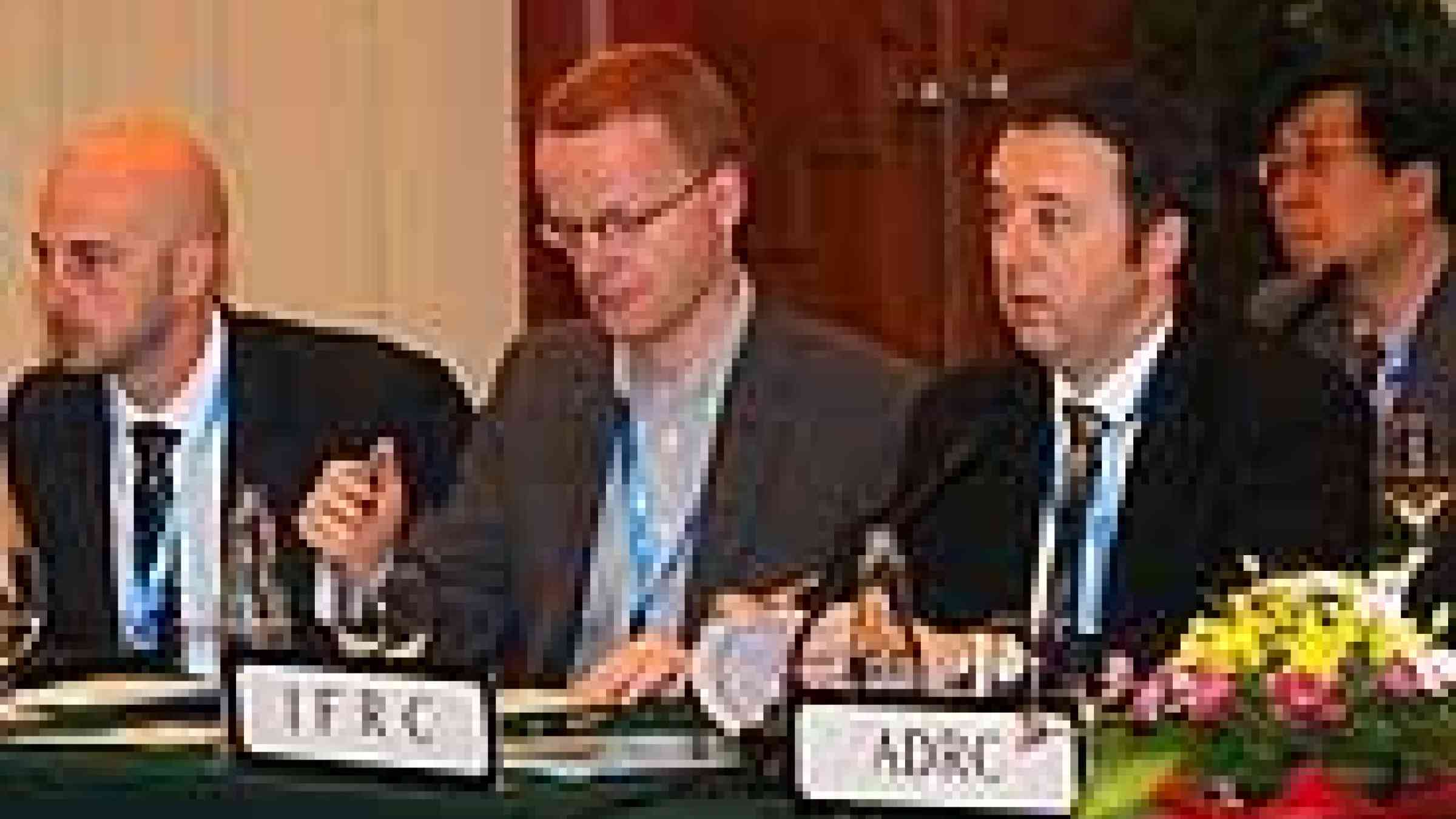IFRC: Looking beyond Hyogo - Editorial

Guided by the Hyogo Framework for Action, nations across Asia Pacific have made significant steps towards building resilience and reducing risk. Michael Annear, head of the International Federation of Red Cross and Red Crescent’s (IFRC) Asia Pacific disaster management unit highlights the need for Disaster Risk Reduction to be central to the post 2015 debate.
This week in Yogyakarta, Indonesia, more than 1,100 participants from 97 countries representing government, academia, the private sector, the Red Cross and Red Crescent Movement, the United Nations, civil society and the media, come together to reinforce the importance of strengthening local capacity for disaster risk reduction.
A key aspect of the discourse will be to look forwards - building on what has proven successful and highlighting the challenges that remain to ensure safe and risk free environments for people living within Asia and the Pacific. Within this dialogue it is important to emphasize how the risk profile we face today has evolved dramatically from that seen in the last decade when the world was meeting at the Millennium Summit and the World Conference on Disaster Reduction.
The UNISDR 2011 Global Assessment Report on Disaster Risk Reduction: Revealing Risk, Redefining Development, indicates that governments and their partners have contributed towards the reduction of mortality to major disasters, especially weather related events. The 2001 and 2010 World Disaster Reports published by the IFRC, indicate that the total number of deaths in proportion to those affected from weather related disaster events has reduced from 29% between 1991-2000 to 21% between 2001-2010. The World Disasters Reports further show that the total estimated damage caused by disasters has increased by 1.3 times when comparing the annual average economic loss between 2000-2010 (US$ 105,551 million) and 2001-2010 (US$ 80,978 million).
This increase poses a considerable challenge to governments in their efforts to achieve targets set by the 2005 World Conference on Disaster Reduction, presented in the Hyogo Framework for Action. With its goal of building the resilience of nations and communities to disasters by 2015, the Hyogo Framework for Action and its five priority areas for action have proven a useful guide to governments in achieving disaster resilience. However, many have struggled to make progress under ‘Priority Area four’ related to underlying risk factors, such as ageing populations, non-communicable diseases, the peaking of the AIDS epidemic, environmental degradation, uncertainty of climate change and increasing levels of poverty.
While these challenges are enormous, experience shows they are not insurmountable. Governments and their humanitarian and development partners need to re-evaluate the way they work. They need to address the underlying causes of vulnerability more confidently and ensure that regulatory frameworks and resources are available to empower people themselves to engage in effective local action.
Seven years after the 2004 Indian Ocean Tsunami, the IFRC commissioned a research project focusing on more than 30 communities in Indonesia, Sri Lanka, Thailand and the Maldives. The aim was to capture people’s perspectives on the characteristics that communities themselves define as being important in maintaining their safety and resilience. The results were summarized into six key characteristics; the importance of knowledge and health as the foundations of resilience at an individual level, being well organized, access to infrastructure and services, economic opportunities and the ability to manage their natural assets as individuals; and lastly the importance of strong connections with external actors.
The voices of these communities have helped to shape the Red Cross and Red Crescent approach to resilience which is defined as: The ability of individuals, communities, organizations, or countries exposed to disasters and crises and underlying vulnerabilities to: anticipate; reduce the impact of; cope with; and recover from the effects of adversity without compromising their long term prospects. This approach integrates many of the insights and approaches of development work with a humanitarian approach.
While the IFRC’s perspective is drawn from the experience of hazard prone communities, it reinforces the perspectives of the European Commission which has proposed a new policy communication to the European Parliament and the Council on how EU development and humanitarian aid should be adapted to increase the resilience and reduce the vulnerability of people affected by disasters. Similarly the United Kingdom’s Department for International Development (DFID) has recently released an approach paper to support its interventions at country and regional levels in adopting a resilience approach. Both papers have emphasized how resilient approaches aid in addressing the root causes of recurrent crises, require long term efforts, and increase the value and sustainability of our risk reduction and development efforts.
With this backdrop in mind, the 5th Asian Ministerial Conference on Disaster Risk Reduction is an opportunity for governments to commit to a shared responsibility of continuing to reduce the loss in lives and social, economic and environmental assets from disasters, while continuing the fight against poverty and sustainable development beyond the 2005-2015 Hyogo Framework for Action and the 2000-2015 Millennium Development Goals.
Multiple risks and their impacts on vulnerable people must be a vital consideration when we look beyond 2015. Governments should further acknowledge that the reduction of vulnerability is a process primarily owned by and largely carried out by people themselves according to their vision for their own futures. It is not a process owned and directed by governments and donors, but it is a process that needs to be supported by robust local level development plans.
This requires political commitment coupled with upgrading of professional skills, particularly at the local level. A shift is needed towards a culture of real outcomes and impacts, where resilience programming involves sustained engagement that is explicitly participatory, inclusive and above all – accountable to the people who are most at risk from disasters.
Michael Annear is the head of the Asia-Pacific Disaster Management Unit for the International Federation of Red Cross and Red Crescent Societies.